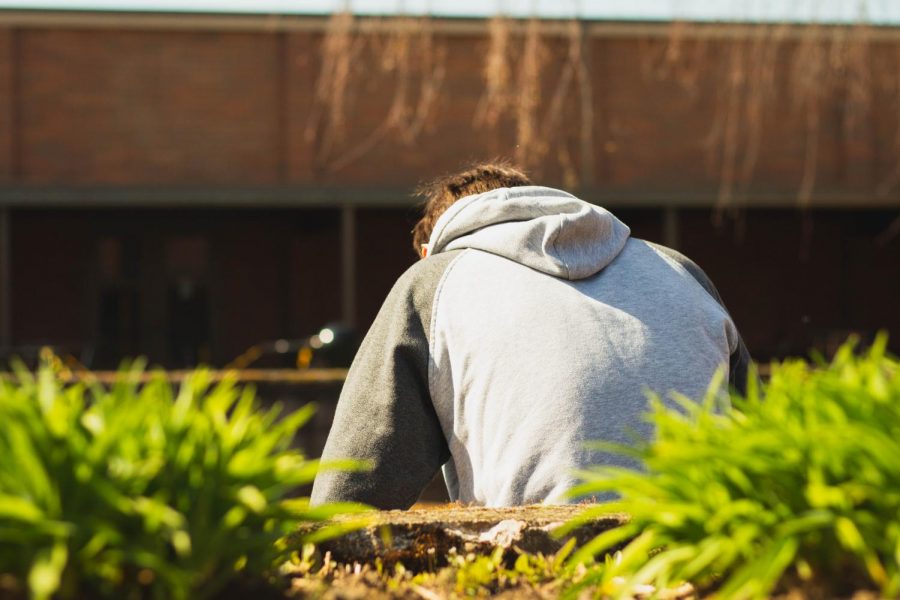The Stigma Around Teens Seeking Therapy Must Come to an End
Nearly 50% of adolescents struggle with a mental illness, and roughly 14% of adolescents receive treatment through therapy.
March 17, 2021
Until I was about 13 years old, I always associated the word “therapy” with how I saw it portrayed in movies and TV shows. In my eyes, what started with chaise lounges in small offices ended with a diagnosis and a prescription.
While the stigma surrounding mental health issues and the accompanying treatment practices has lessened significantly in recent years, the fear of seeking help through therapy is one I still see present in many of my peers.
Seemingly, younger generations are largely accepting of people who seek help through talk therapy, but with this has come generalizations from older generations that people today are “too sensitive” and need to deal with their emotions themselves.
After years of struggling with my own mental health, at the beginning of my sophomore year I decided to ask my parents if seeing a therapist would be something they would be OK with. Once I confided in my friends and told them about my decision, to my surprise, I found that most of them already saw therapists regularly.
My shock came less from the fact that they saw therapists and more because I had no idea about it. I spent so long seeing therapists as a last resort solution for people going through a major life event, rather than an outlet regularly used by many people my age.
According to the National Institute of Mental Health, nearly 50% of adolescents struggle with a mental illness, and roughly 14% of adolescents receive treatment through therapy. Upon learning that millions of people my age are seeing therapists, I wondered if attending therapy has already been normalized, but talking about it has not.
Although I was in a particularly low place when I began seeing a therapist, I quickly found that talking to her was actually something I looked forward to. Even when my mental health reached a place where I wouldn’t consider therapy necessary, I still found it highly enriching to my life.
I was no longer getting direct help for mental conditions — I was just talking about my life with somebody who was there to support me with whatever I needed to say.
When thinking about the normalcy of therapy, I realized that all aspects of life could lead a person to need the help of a therapist.
Common situations such as divorce, the loss of loved ones, or just everyday life at school or home can all lead to feelings of stress or sadness. People should not feel ashamed of seeking out the help that they need to put themselves in the right state of mind.
Something positive that could come with the increase of casual therapy is a decrease in substance abuse issues. Studies have found that about 50% of people who suffer from severe mental illnesses also suffer from substance abuse. Making therapy more accessible and more casual could allow people to seek help in less harmful ways.
Regarding the accessibility of therapy, it is no secret that the costs of these services can be high. Although copays vary amongst insurance companies, the average cost of therapy without insurance in the United States is $100 to $200 per hour.
For this reason, therapists and counselors should be available not only in schools but also in workplaces. The sooner that therapy and seeking help is seen as a common and necessary mental health outlet, the sooner more people will have access to something that is currently a privilege.
Another common misconception about therapy that’s important to consider is that seeing a therapist doesn’t necessarily mean that somebody is mentally ill. While therapy, when used as a treatment, can be highly effective, many people seek therapy as a way to simply vent about things in their life to somebody who is well-equipped to listen.
Particularly for children and adolescents, counseling can be an escape from other stressors in life. School counselors can serve as an outlet for young people who don’t have confidants at home that they can talk to about what they need help with.
In my experience at La Salle, talking to school counselors isn’t something people get made fun of for. However, in other school communities with less transparency about the importance of mental health, being seen in the counselor’s office could create a target for bullying on a person’s back.
Even in settings where students do feel supported in their choice to utilize counseling, furthering their access to mental health resources through community discussion can help to eliminate any additional stigma. I believe the counselors at La Salle work hard to support the students who choose to see them, but due to the lack of peer conversation, people might feel wary about embracing the chance to seek out their help.
While getting teens to feel comfortable opening up about their personal struggles in group settings can be challenging, allowing them to do so can begin to improve the culture around mental health at La Salle. Providing more resources for students and giving students the space to talk openly about their experiences with therapy would further support the individuals in the La Salle community in their everyday struggles inside and outside of school.





